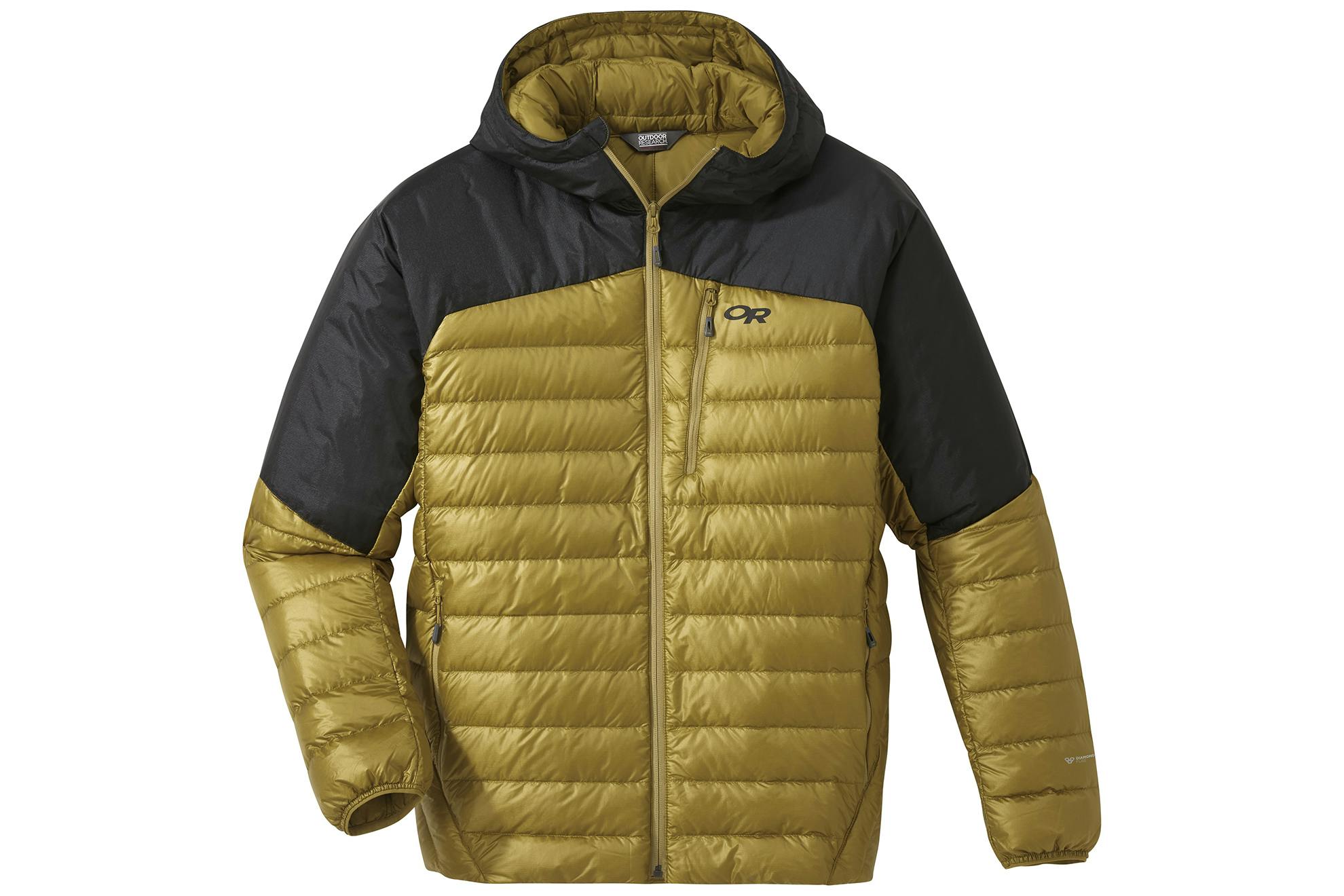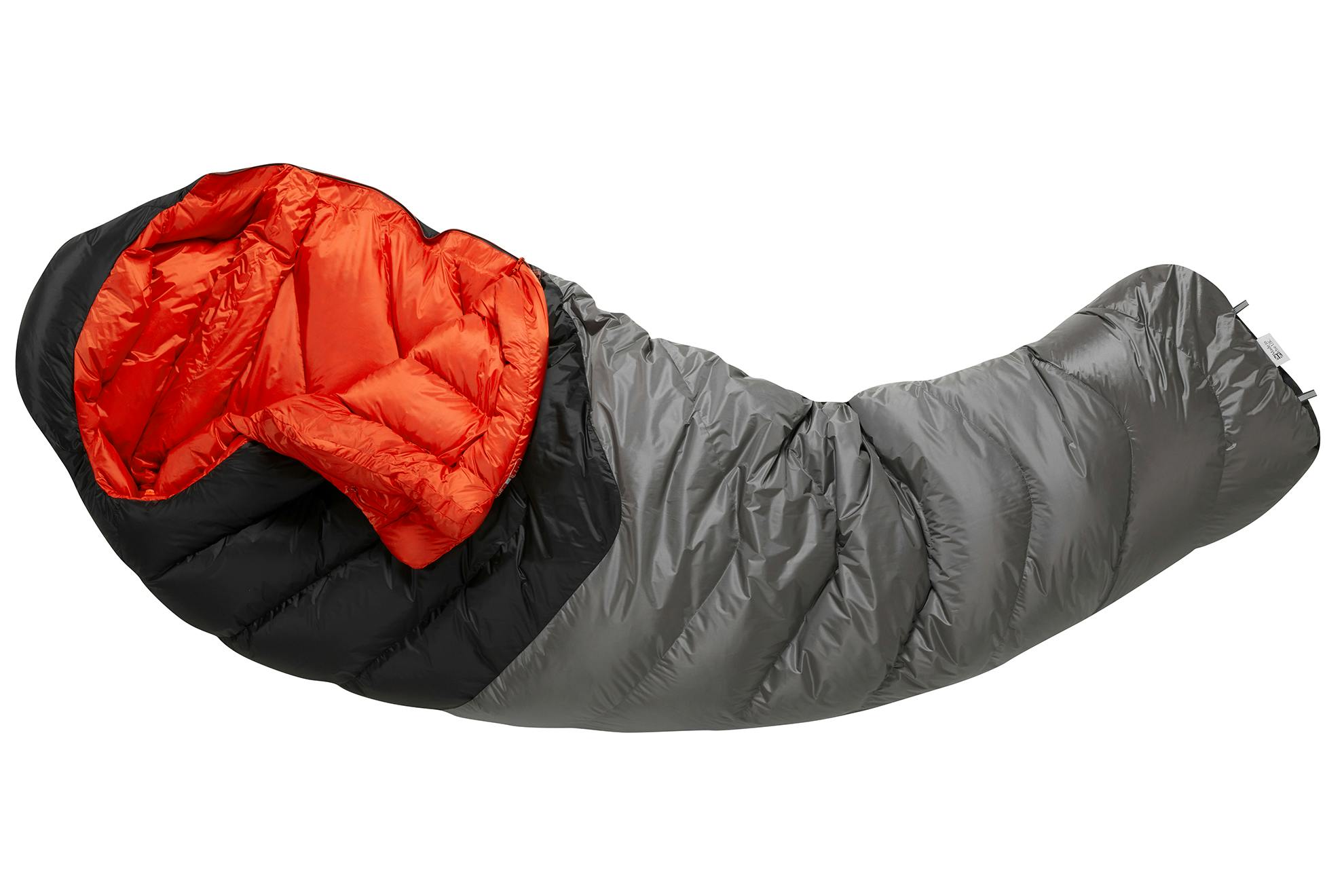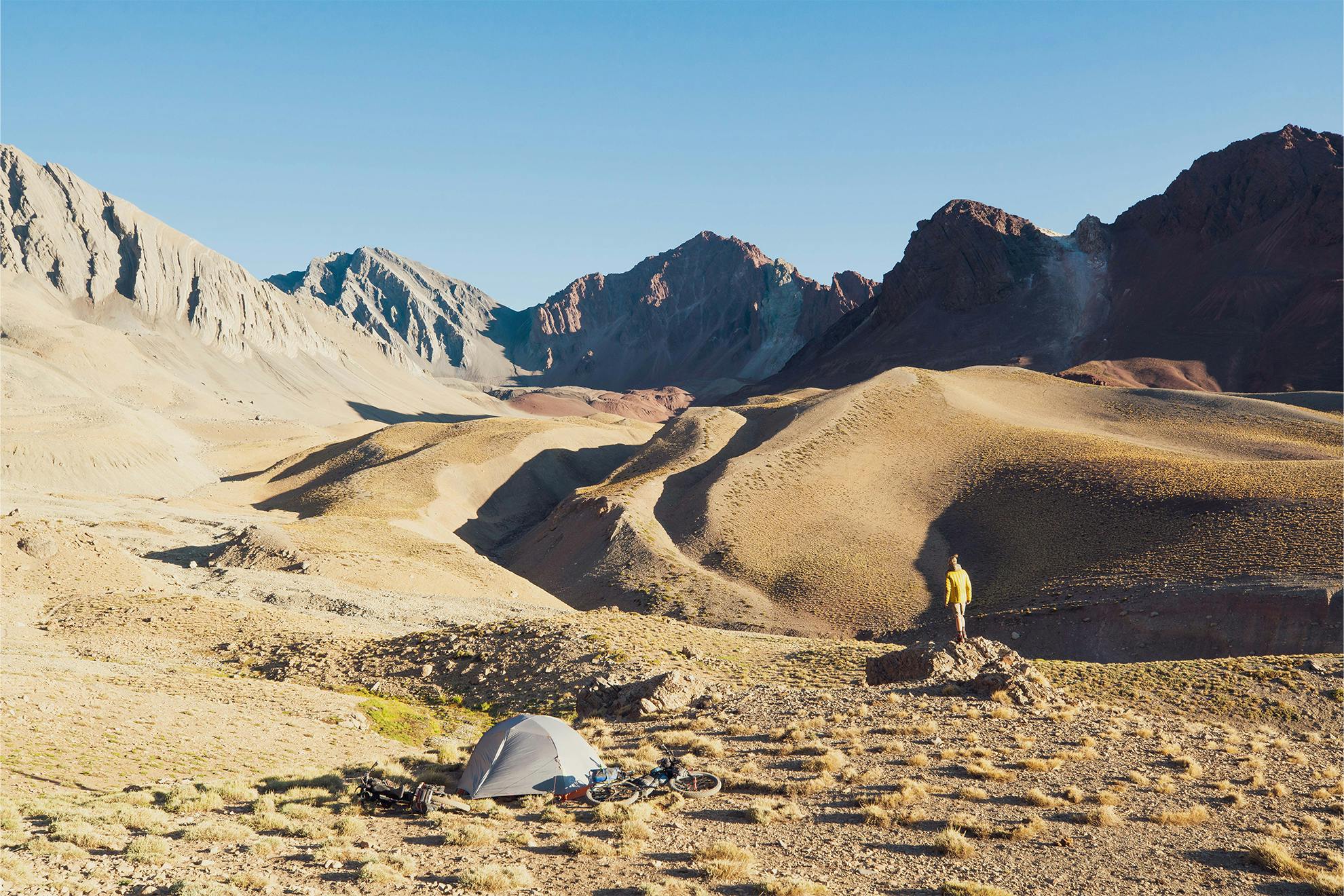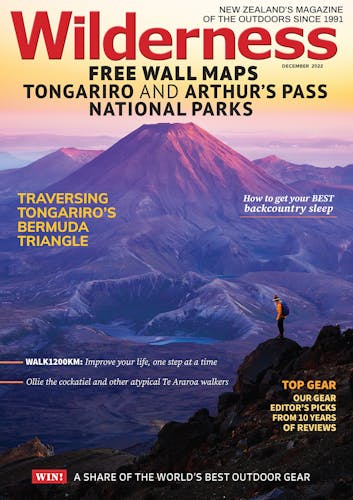Our gear editor picks the top gear items he’s reviewed over the past few years.
I’m not a gear freak, but through my work for Wilderness I see a lot of gear.
It’s enjoyable trying out all sorts of different gear in the outdoors, but so is the exposure to new materials and manufacturing techniques, which change surprisingly quickly. Most items reviewed at Wilderness are handpicked products that we think will suit certain users, price points and categories. It means the gear reviewed is already pretty solid. But now and then we’ll review something that’s best in class; it really stands out for innovative use of materials, technology, or clever design.
Big Agnes Copper Spur HV UL2 Bikepacking
Versatile 3-season tent
The Copper Spur was home to me for nine months while cycling through the Andes from Peru to southern Chile. That tent – occupants included – was subjected to many -10°C nights, camps above 5000m, snowfall and gale winds. We spent so much time in arid, high-altitude environments that the fly shrank and would scarcely fit over the tent. Dust destroyed the zip sliders and during windy nights in the desert everything in the tent would be covered in a fine layer of sand. You could say we put it through its paces … But come summer in Patagonia we enjoyed the tent’s high breathability and nights with the fly off, gazing at starry skies. With other tents we might not have had to crunch on grit with our granola, but then you don’t get the full three-season versatility either. This is what makes this tent work for me; some discomforts are liveable with for a tent that’s ideal most of the time. There are many options available in the three-season, free-standing, dual-vestibule tent class these days. The Copper Spur though is my favourite thanks to its tiny Shortstik poles (making packing easier), its livable interior with ample storage space, and its weight, which ducks under its closest competitors.

Black Diamond Raven Pro
Lightweight ice axe
I think we operate best in the outdoors when we’re at one with our equipment. You might be familiar with that sensation of riding a bicycle that’s the perfect fit, descending on skis that you know really well, or walking with a pack that’s broken in, fits comfortably and moves with you. The Raven Pro is like that for me: its feel in the hand is familiar, and I have a good sense of its position in space because I’m so used to wielding it. I intuitively know when the ferrule is going to strike the snow surface, and the sound when it hits hard ice. Its tactile feedback is an extension of my hand. These are important traits in a piece of equipment that is relied on so much. The Raven Pro is a lightweight walking axe that is a perfect example of ‘less is more’. Its clean, straight shaft plunges deep into snow for security, the stainless pick holds its edge and thwarts corrosion, and, while very light, the head has a classical shape and just enough weight to allow confident step cutting.

Hoka One One Anacapa Mid
Fastpacking boots
I scoffed a bit when I first opened the box and handled the Anacapa boots: exposed soft foam in the sole, such thick midsoles, and that weird kick-out in the heel. But these boots soon became my go-to for day hikes, short local walks and, were I to be setting out to thru-tramp Te Araroa again, they’d be on my feet for the North Island leg.
A hallmark of the Anacapa is its thickly padded midsole that extends broadly to the sides of the foot, providing a lot of stability and traction. If you’re an ankle roller, these are great boots. They’re tall for a mid, which gives great ankle support and stability, and the close-fitting cuff helps to stop dirt entering the boots. Like a lot of modern lightweight footwear, the outsole is bonded to the midsole, but without total coverage, so the soft EVA used in the midsole is exposed in places, particularly the arch. This means they won’t last as long as a harder-sole boot, but for now I’m going to continue enjoying the sensation of walking on marshmallows.

Grivel Air Tech Light
Aluminium crampons
You put a lot of faith and trust into crampons. When all that’s holding you onto a steep, hard snow slope is gravity and a few metal spikes, they must be reliable. Grivel, from Italy, is one of Europe’s oldest and most innovative climbing equipment manufacturers. The company’s range of crampons covers every base, from casual glacier walking to precipitous dry tooling. A model I use a lot is the Air Tech Light. Most often, these are for summer adventures in the Darran Mountains and transalpine tramping trips. Their alloy construction is a big weight saver, and they last well as long as they’re removed for lengthy rock transitions. Their large plastic heel and toe components mean they mount confidently on approach shoes (as well as boots) and their stainless steel connector bar copes with flexible footwear. Summer can often mean a soggy snowpack, and that’s where this crampon’s built-in active anti-balling plate becomes essential for safe and expedient travel.

Exped Whiteout 55
Waterproof alpine pack
The Whiteout’s clean, simple functionality, its design and durable fabric made it an immediate favourite for me. In a country with fickle, changeable weather and high rainfall, completely waterproof packs make sense. Let’s face it – pack liners add weight, are annoying, and if you don’t replace them often, will probably leak anyway. Even when I’m using a pack liner I still put critical items, such as spare clothing, my sleeping bag and electronics, in separate dry bags anyway. Many trampers won’t like the Whiteout’s dearth of pockets, and the unpadded hip belt makes it a bit uncomfortable with really heavy loads, but for short trips in any weather the Whiteout is a winner for me.

Outdoor Research Helium Down Hoodie
Lightweight down jacket
Sometimes I review a product for Wilderness and know quickly that it’s a keeper. The Helium Down Hoodie is one such example, so, after I’d tested it and written up my review, I purchased it. The Helium is everything that a lightweight down jacket should be: it’s actually light (436g), and it’s also durable thanks to the fancy Diamond Fuse waterproof fabric in the hood, shoulders and upper arms. With plush 800+ fill-power down, smart design, a great fit and perfect finishing, what’s not to like? Even the $450 price tag is agreeable for this class of jacket.

Rab Neutrino Pro 500
Alpine sleeping bag
Narrowing down my favourite sleeping bag was tricky, largely because I have my favourites for different conditions. I’m not a one-sleeping-bag person and use a quilt and two different styles of bag throughout the year depending on conditions – largely to avoid having to carry more weight than is needed. I prefer to ‘under bag’ and wear more clothes to keep warm. So I decided to pick the sleeping bag I’d want to be in if conditions got really grim! Stuck on the winter tops, with a broken leg and bad weather, the bag I’d want to be in is the Neutrino Pro. Its water-resistant fabric and down, bombproof construction, durable materials and great usability with features that lock in the warmth, add up to win this bag the survival shelter of the year award.

LedLenser MH10
Powerful headlamp
At just a tad over a half-century in age, my vision has (recently) degraded so that I now wear a headlamp just to work on fiddly parts on my bike in low light, and I’m beginning to hold my phone further away to focus on it. So when I’m tramping or route finding in the dark, I really appreciate extra lumens of brightness and good quality light sources. The MH10 is not the lightest or the brightest in its class, but it provides an exceptionally crisp pool of light that can be focussed seamlessly from floodlight to a narrow path-finding beam, out to 150m range. I’ve used it for nighttime tramping and bikepacking ultras and have found its three brightness modes, recyclable and rechargeable battery and IXP4 water resistance to make it an excellent adventure companion.








